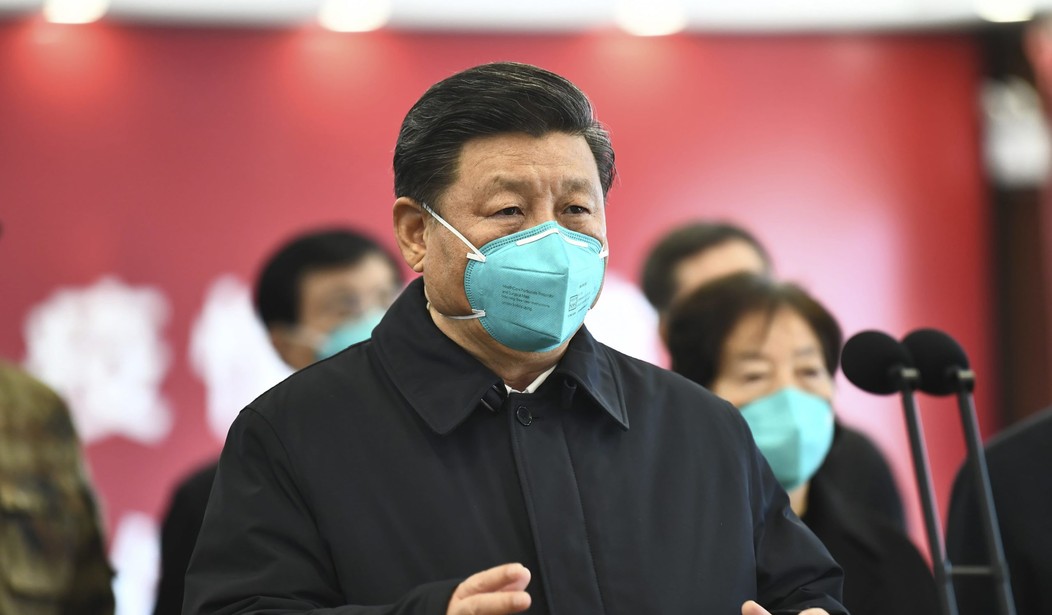Canada, France, Germany, Italy, Japan, Britain, and the U.S. should take legal action against China’s Communist Party for failing to report and contain the Wuhan coronavirus, according to a blockbuster new report from the British think tank the Henry Jackson Society (HJS). The report lays out, in damning detail, China’s horrific censorship of facts about the virus, which violated numerous international laws and agreements, making Beijing liable for at least $4 trillion in damages.
“The CCP could have taken timely steps to contain the spread of the virus, but, for reasons that may never be clear, it wittingly failed to do so. As such, the CCP bears full responsibility for the consequences,” the HJS report explains. A University of Southampton study found that if strict quarantine measures had been introduced three weeks earlier, the coronavirus’s spread would have been reduced by 95 percent.
The international spread of the novel coronavirus is not just tragic — it is also arguably a breach of international law. After the 2003 SARS epidemic, the World Health Organization (WHO) adopted the International Health Regulations (IHR), which bind countries like China to report timely, accurate, and detailed public health information in what the report claims was possibly “a deliberate act of mendacity.”
Article Five of the IHR requires that countries maintain and implement the capacity to monitor “disease or death above expected levels.” Article Six requires countries to notify the WHO about any health incident that meets a specified risk indicator. It requires the country to provide “timely, accurate and sufficiently detailed public health information available.” Article Seven extends the requirements of Article Six to circumstances where a government “has evidence of an unexpected or unusual public health event within its territory… which may constitute a public health emergency of international concern.”
As a result of China’s violations of these requirements of international law, the HJS report assesses potential damages against China could run to $4 trillion from just the G7 nations. The report claims Britain has a claim worth a potential $449 billion in damages based on announced government spending. Similarly, the U.S. could claim $1.2 trillion, Canada could claim $59 billion, and Australia could claim $37 billion. The true damages will likely run much higher as the report only considers spending announced as of April 5, 2020, rather than the total projected spending during the crisis.
So how did China violate international law? The HJS report includes a brief timeline to illustrate the Chinese Communist Party’s many failings.
According to unpublished, unconfirmed Chinese government reports seen by the South China Morning Post, the first recorded case of the coronavirus dates to November 17, 2019, weeks before The Lancet‘s claim that the first recorded case came on December 1. By December 8, the SCMP documents recorded between 1 and 5 new cases. By December 27, the SCMP documents showed 181 confirmed cases, and a friend of coronavirus whistleblower Dr. Li Wenliang recalled that his medical department first reported the new outbreak to the Wuhan Center for Disease Control on the 27th.
On December 30, Dr. Li sent a message to his friends about the outbreak, and the police responded by investigating his friends. The authorities forced Dr. Li to pledge not to spread “disruptive rumors.” Meanwhile, by that date, the SCMP documents recorded 266 cases. Li would go on to die of COVID-19 after contracting it from his patients. On December 31, China finally reported the outbreak to the WHO, while claiming there was no evidence of human-to-human transmission.
On January 1, 2020 a Hubei official ordered coronavirus tests halted and samples of the virus destroyed. On January 14, the WHO reported some human-to-human transmission, but quickly retracted the claim, citing Chinese sources. Wuhan was not put under lockdown until January 22-23. On January 26, Wuhan’s mayor admitted that 5 million people had already left the city.
“It is evident from this sequence of events that the Hubei authorities deliberately understated the severity of the growing epidemic and allowed it to spread unchecked for several weeks, particularly throughout the vital first fortnight of January, by which time it was clearly spreading increasingly rapidly from person to person,” the HJS report explains. “Worst of all, to the alarm of responsible experts and practitioners, proof of rapid HTH transmission was ignored and deliberately concealed.”
Responsibility for this colossal failure does not just lie with the local authorities in Wuhan and Hubei, however. On January 7, the CCP’s journal Qiushi began publishing timelines of President Xi Jinping’s efforts against the outbreak. A transcript of a speech Xi gave on February 3 referred to a statement he had made on January 7 at a meeting of the CCP Politburo Standing Committee, when he had “issued requirements for the prevention and control of the new Coronavirus.”
Xi Jingping could have acted to shut down Wuhan as early as January 7, two weeks before the city was shut down.
“From the outset, the CCP tried to censor attempts by Chinese citizens to identify and publicise the truth concerning the origins, nature and dangers of the virus. Not all of these censorship efforts succeeded, and a considerable body of independent, corroborative data came to light,” the HJS report explains. “Though all information in the Chinese official media is subject to CCP control and prima facie cannot be trusted, carefully comparing demonstrably factual non-official data with suitably caveated information from official channels makes it possible to construct a coherent, fact-based picture of what actually happened, and hence to allocate responsibility.”
There is an extremely strong case to be made that China violated its IHR commitments, yet the HJS report notes that the WHO — which is responsible for enforcing the commitments — has shown no desire to act. However, G7 nations and other countries can bring a complaint to the WHO.
The HJS report presents ten different ways various countries can hold China accountable:
- A dispute brought to the WHO that China has breached its obligations under the IHR.
- Claims made at the International Court of Justice.
- Disputes opened at the Permanent Court of Arbitration.
- Actions brought under Bilateral Investment Treaties by individuals, corporations or States.
- Actions taken under the United Nations Convention on the Law of the Sea to either arbitration or the International Tribunal.
- Action taken under World Trade Organization rules.
- Claims brought before the Hong Kong Courts that the actions of state bodies breached rights under the UN’s International Covenant on Economic, Social and Cultural Rights.
- Claims brought in the US Federal Courts against the Chinese State that fit an exemption within the Foreign Sovereign Immunities Act.
- Claims brought in the U.S. federal courts against commercial entities linked to the Chinese State.
- Claims brought in the English courts against commercial entities linked to the Chinese State.
While it may seem drastic for countries to use international law to hold China accountable for its malfeasance on the coronavirus, these international treaties and agreements arguably exist for just this reason. If international law cannot hold China accountable for lying and enabling the spread of a global pandemic, what else could it possibly be good for?
Tyler O’Neil is the author of Making Hate Pay: The Corruption of the Southern Poverty Law Center. Follow him on Twitter at @Tyler2ONeil.









Join the conversation as a VIP Member